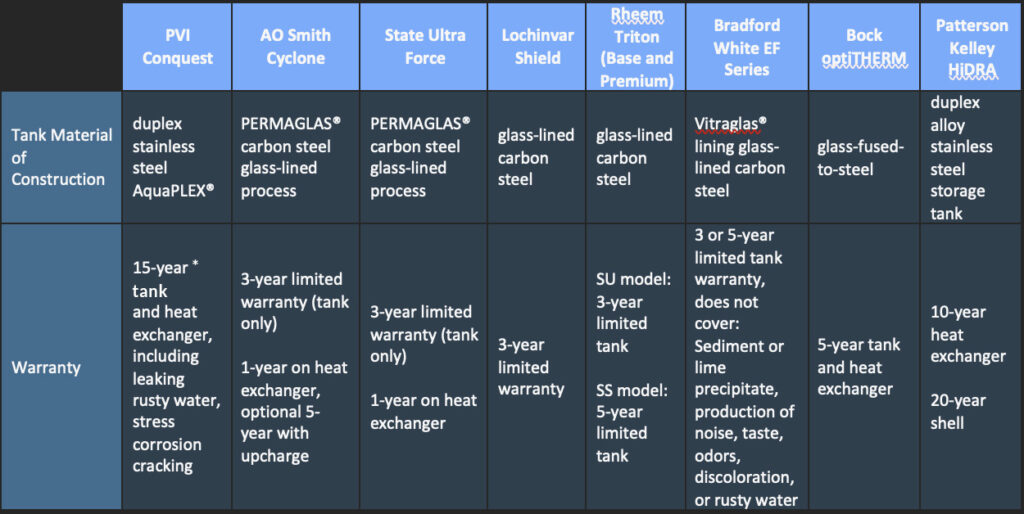When you’re researching water heaters, you first ensure that the product meets your needs technically (flow, heat input or source, space requirements, and recovery rate). Once you’ve done that, you next look at a cost comparison. It is important to not only look at the initial cost, but also the lifetime cost as well.
What’s in a Warranty?
So, you’ve gone through the sizing calculations and understand the technical requirements of your water heater. If you, or your client, will own or operate a building long-term, you will want to ensure that you evaluate the cost of the water heater over the period of ownership. Will you need to replace that water heater after 3-5 years? If so, then you should factor the additional equipment costs as well as the removal and reinstallation costs against having a water heater that will last longer.
We have previously discussed materials of construction for water heaters. These materials affect how long the water heater will last and that is then reflected in the company’s warranty duration. Whether the tank is glass lined, stainless steel or duplex stainless helps determine the tank life and therefore what the manufacturer is willing to warranty. See the table below for a comparison of warranties offered by different manufacturers.
There are many factors that affect water heater life, one of the largest is water quality. For this discussion, we will neglect water quality, because all units will likely have their relative life affected in the same manner. One thing to note, though, in the table below is the PVI Conquest will warranty the tank even in the existence of rust-colored water against stress-corrosion cracking, while others will nullify the warranty for that reason.
*8 years full, 7 years prorated
How Does This Affect Cost of Ownership?
Water heaters will not fail on the day that the warranty expires, but the table above allows us to see a relative comparison of how long they will last. If we start with the assumption that the water heater will last roughly 1.5 times the life of the warranty, then we can look at a 20-year period to see how much each unit will cost the owner.
PVI Conquest costs roughly 25-35% more than the base competitors. For the 20-year period, the PVI Conquest will likely not need to be replaced, so the total cost for that period is the 1.25 x base. For the units with a 3-year warranty, they will need to be replaced four times (about a 4.5-year life). This puts the total equipment cost for the base competitors at 5 x base.
This analysis also neglects the cost of labor to remove the failed water heaters and install the replacement. If you do this two-to-four times throughout a 20-year period, those costs start to add up quickly and just adds to the savings that would be seen with the PVI Conquest.
Cost of Being Without Hot Water
Whether the water heaters supply hot water to a school, hospital, nursing home, or apartment building, everyone just expects the hot water to be working and available. When they do fail, this comes with a lot of unhappy people. Until the unit can be replaced, hot water production is either reduced or non-existent. Then comes the headache of purchasing another water heater and scheduling the replacement so that the hot water needs of the building can be met again.
It’s easy to look at the initial price and see one unit is cheaper and go with that, but that method neglects not only the headaches of failures and replacing those units, but the cost of additional equipment and the labor to remove and install it. For owners that know they will be maintaining a building throughout its life, a complete cost analysis is a must.



